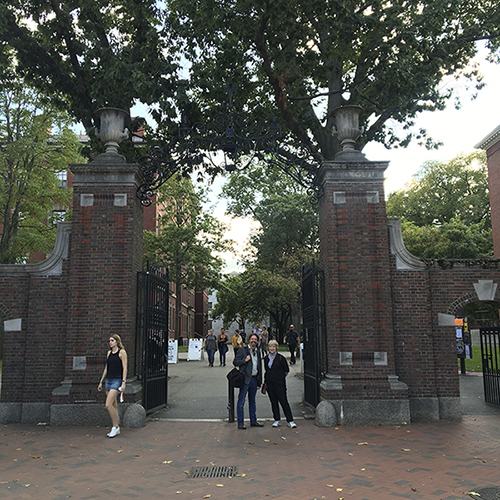About Us
Erica Goode wrote in the New York Times in September 1999, "Most people experience the sensory world as a place of orderly segregation. Sight, sound, smell, taste and touch are distinct and separate: A Beethoven symphony is not pink and azure; the name Angela does not taste like creamed spinach. Yet there are those for whom these basic rules of the senses do not seem to apply. They have a rare condition called Synesthesia, in which the customary boundaries between the senses appear to break down, sight mingling with sound, or taste with touch." Copyright © 1999 The New York Times Company. Reprinted with permission.
Relatively little was known in 1999 about this ability called Synesthesia, but research over the past 18 years has shown that synesthesia is not nearly so rare as once believed. Although its existence has been recognized for several centuries, it is only in recent decades that synesthesia has received serious scientific attention. Two developments have contributed importantly to this greater awareness of and attention to synesthesia: the development and use of methods of neuroimaging, especially fMRI, and the spread of the Internet. The ability to monitor ongoing human brain activity has launched numerous studies of synesthesia in research laboratories around the world, and the widespread and easy access to the Internet have enabled synesthetes around the world to learn more about their abilities and to contact one another.
The American Synesthesia Association, Inc., a not-for-profit organization, was created in 1995 by Carol Steen and Patricia Lynne Duffy to provide information to synesthetes and to further research into the area of synesthesia. The mission of the ASA is to foster and promote the education and the advancement of knowledge of synesthesia, and to promote and provide a means for the people who experience and/or study synesthesia to be in contact. As part of its educational mission, the ASA will provide information to scientists and other researchers, health professionals, academicians, artists, writers, musicians, lay persons, and people who experience synesthesia.
To date, the ASA has held twelve major conferences in notable Universities, including Princeton, Yale, Rockefeller, Vanderbilt, the University of Miami, the University of California San Diego, the University of California Berkeley, the University of Texas, and Harvard University.
ASA conferences attract a distinguished and colorful mix of synesthetes, artists, writers, composers, and researchers. To learn more about ASA conferences, or to support the work of the ASA by becoming a member, please visit the conference and membership pages on this site.
The Members of the Board of the ASA are Greta Berman, Edward Hubbard, Peter Grossenbacher (emeritus), Lawrence Marks, Daphne Maurer, and Carol Steen.
Photo Credit Carter Jones, Greg Jarvis, Carol Steen at Harvard













